| Title | Pages |
|---|---|
| New Chromosome Numbers and Karyotype Analysis of Tordylium (Apiaceae) Species with Emphasis on Their Systematics and Evolutionary Significance In Turkey, there are eighteen Tordylium (Apiaceae) species out of twenty in the worldwide and seven of them are endemic. In this research, karyotypes of T. apulum, T. pestalozzae, T. syriacum, T. trachycarpum and karyotypes and chromosome numbers of T. cappadocicum, T. aegaeum, T. hasselquistiae, T. ketenoglui (endemic), T. macropetalum (endemic), T. pustulosum (endemic) are provided for the first time. Tordylium species are separated into five cytotypes according to chromosome numbers as 2n=8, 16, 18, 20 and 22. Besides, idiograms of haploid chromosome set, length of the chromosome arms, arm ratios, centromeric index, relative length and haploid karyotype formulas are given. T. ketenoglui has longest chromosome lengths (3.39-1.66 μm) while T. aegaeum has shortest (1.10-0.59 μm). Additionally, principal component analysis (PCA) has been performed by quantified karyological characters. PCA results show that the median type and haploid chromosome length have significant variants among karyological characters. Also, correlation among karyological data, current infrageneric classification and the phylogenetic hypothesis based morphological dataset of Tordylium are discussed. Karyological characters are incompatible with current infrageneric classification, similarly with conflict between the phylogenetic hypothesis and infrageneric classification. In the light of the phylogeny, it could be stated that the ancestral number is 2n=16. 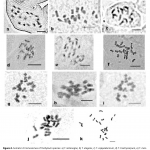 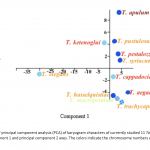 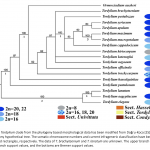 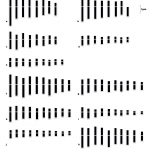 | 99 - 111 |
| Degradation of Reactive Orange 16 Dye With Heterogeneous Fenton Process Using Magnetic Nano-Sized Clay as Catalyst: A Central Composite Optimization Study In this study, Fe3O4/montmorillonite was synthesized as a heterogeneous Fenton catalyst to remove Reactive Orange 16 from aqueous solutions based on chemical oxygen demand. System parameters such as H2O2 concentration, catalystdose, pH, and reaction time were numerically optimized based on Central Composite Design. The catalyst was characterized with X-ray diffraction, Fourier transform infrared spectroscopy, scanning electron microscopy, energy-dispersive X-ray spectroscopy, transmission electron microscopy, dynamic light scattering, ζ potential, and Brunauer-Emmett-Teller. The adsorption process contributed to the removal of Reactive Orange 16, but the heterogeneous Fenton process had a higher share and occurred faster than the adsorption process. Optimum conditions were determined as catalyst dosage:1.83 (g/L), H2O2 concentration:77.98 (mM), pH:3, and reaction time:60 min. Under these conditions, chemical oxygen demand removal effi- ciency estimated from the model was 84.82% and found experimentally was 85.90%. Successful removal of Reactive Orange 16 from aqueous environments is possible with a heterogeneous Fenton process using Fe3O4/ montmorillonite. 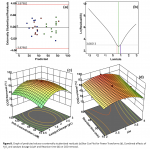 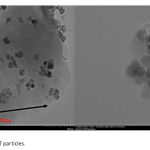 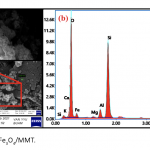 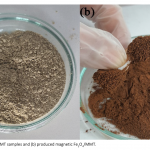 | 113 - 129 |
| The Role Of Antibiotics in The Management of the Polyol Pathway: an in Vitro and in Silico Approach Increased activity of aldose reductase (AR) and sorbitol dehydrogenase (SDH) are the major causes of diabetic complications. Thus, inhibition of these two enzymes is vital in preventing diabetic complications. As the synthesis of new and effective AR and SDH enzyme inhibitors is quite difficult, we have investigated the inhibition effects of antibiotics, which are already widely used in medicine, on AR and SDH enzymes. AR and SDH enzymes were purified from bovine kidney, in vitro effects of antibiotics on enzymes were determined, and molecular docking simulations were carried out to understand inhibition mechanisms. The antibiotics ampicillin and amikacin inhibited both AR and SDH enzymes at very low concentrations. The best inhibitors for AR were found to be ceftriaxone, tylosin, and metronidazole with IC50 values of 28.75 μM, 49.28 μM and 58.42 μM, respectively. The best inhibitors for SDH were seen to be amikacin, ampicillin, and ceftazidime with IC50 values of 2.4 mM, 2.62 mM, and 3.76 mM, respectively. The results of inhibition and docking studies showed that antibiotics are highly effective on these enzymes. The results obtained can be used as a reference for synthesizing better inhibitors in future studies. 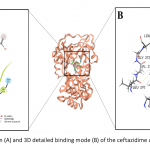 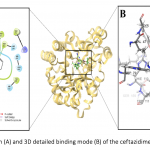 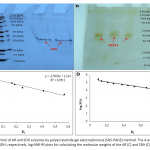 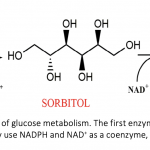 | 131 - 142 |
| Analysis of Microbial Diversity in Various Forest Communities by Biolog Ecoplate Method: Yenice Hot Spot The present study identifies the hot spot of Yenice and aims to determine the tree diversity in the Fagus-Abies, Fagus, and Quercus-Fagus forests, to define the microbial community in these forests by the Biolog-Ecoplate method and to reveal the physiological profile differences at the community level between forests. Accordingly, soil samples were taken from these predefined forests and the microbial community in different forest communities was analyzed using the Biolog EcoPlate method. In addition, cover-proportion values of the tree species were determined according to Braun-Blanquet method. As a result, the diversity in microbial communities has been determined as Fagus-Abies (3.0033 ± 0.006), Fagus (1.2267 ± 0.006), and Quercus-Fagus (1.1267 ± 0.012), from highest to lowest, respectively. On the other hand, the fact that the diversity of carbon sources in the Fagus forest was quite high and the use of phosphate carbon is seen only in this type of forest is quite significant. In the present study, the Biolog Ecoplate method was applied for the first time to determine the microbial community among forest communities. The results obtained from the present study clearly show the practicability and effectiveness of this method in forest communities. Meanwhile, the determination of the microbial community will contribute to the development of new strategies for establishing ecosystem protection practices. 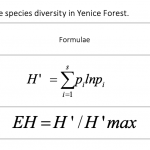 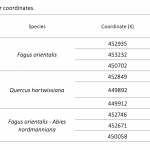  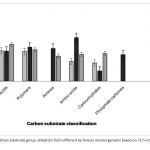 | 143 - 150 |
| Cytotoxic Activity Studies of p-Chloro and Fluoro Substituted Formazan Derivatives on Lung and Prostate Cancer Cell Lines The cytotoxic activity properties of formazan derivatives (CF and FF) bearing halogen chlorine and fluorine groups placed at para position in 1-phenyl ring have been systematically investigated in this work. The synthesized two compounds were tested as anticancer agents against human cancerous (A-549 and PC-3) cell lines for 48 h. FF containing p-fluoro in 1-phenyl ring was demonstrated more antiproliferative activity in A-549 and PC-3 cell line as compared to the compound CF having p-chloro. Particularly, compound FF gave better result than CF and cisplatin, which is used as a positive control drug, against PC-3 cell line. The results obtained showed that these two compounds have cytotoxic effect towards screened cell lines. 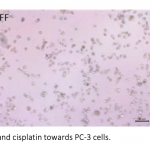 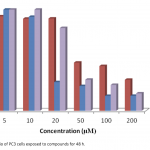 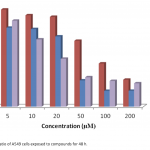 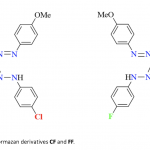 | 151 - 156 |
| Synthesis of New Pyrazole Derivatives via Diketonic Michael Adducts Pyrazole ring containing heterocyclic molecules have been known to show biological activity. In this work, by realizing the cyclization reactions of diketonic Michael adducts, synthesis of new pyrazole compounds was accomplished. Diketonic Michael adducts were prepared in low-good yields by the addition reactions of acetylacetone to nitrovinyl arene compounds in the presence of piperidine. Pyrazole compounds were obtained in high yields via the cyclization reactions of these molecules. Structures of all the addition and the cyclization products were clarified by using 1H NMR, 13C NMR and HRMS techniques. 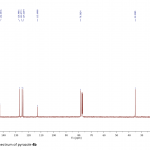 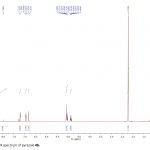 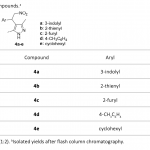 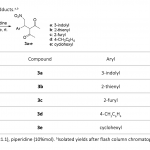 | 157 - 162 |
| Protein Adsorption on Poly-3-hydroxybutyrate and Poly(3-hydroxybutyrate-co- 3-hydroxyvalerate): Adsorption Isotherms and Conformational Analysis of the Adsorbed Protein The equilibrium adsorption of bovine serum albumin (BSA) on poly-3-hydroxybutyrate (PHB) and poly(3-hydroxybutyrate-co-3-hydroxyvalerate) (PHBV) surfaces was studied at different solution concentrations. The equilibrium adsorption data were fitted to the Langmuir and Freundlich adsorption models. Adsorption behaviour of BSA on PHB and PHBV surfaces was further investigated by analysing the conformation of the surface adsorbed protein with Fourier transform infrared (FTIR) spectroscopy with an Attenuated Total Reflectance (ATR) apparatus. The results showed that the Freundlich isotherm was a better fit for the adsorption of BSA on PHB and PHBV surfaces, which is supported by the significant conformational changes that BSA undergoes upon adsorption. 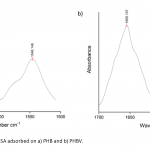 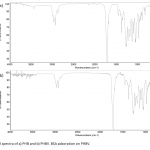 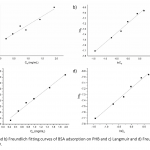 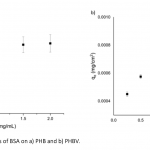 | 163 - 171 |
| Optimization of Ultrasound-Assisted Extraction of Olive Leaf (var. Halhalı) Extracts In this study, the effects of three different independent variables (extraction temperature, extraction time, ultrasonic power) on the total phenolic content, extraction yield and antioxidant capacity (IC50) of olive leaf extracts of Halhalı variety, which is originated from South-eastern Anatolia Region were investigated. As a result of the evaluation made with the Box-Behnken Design Model, the optimum conditions were determined as 62.94°C, 50.67 min, and 64.65% ultrasonic power for the optimization of ultrasonic-assisted extraction. In order to visualize the effect of the extraction method on TPC, extraction yield and IC50 value of olive leaf extracts, the results of three extraction methods were compared. The differences among the mean values of the investigated parameters in terms of extraction method were found significantly different (P<0.05). In addition, it can be inferenced that ultrasound assisted extraction accelerated the transition of phenolic substances to solvent in terms of SEM images and investigated other parameters. 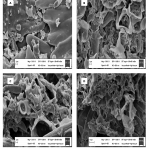 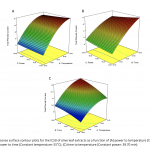 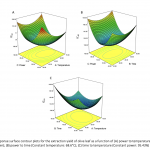 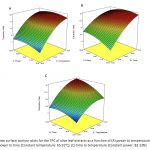 | 173 - 184 |
| Synthesis, Characterization, Investigation of AChE Activities and Molecular Docking Studies of New Schiff Bases Based on Substitute Salicyl Aldehyde In this study, two new Schiff base compounds (4 and 5) based on substituted salicyl aldehyde were synthesized. The structures of the synthesized compounds were determined by FT-IR and 1H(13C) NMR spectroscopies. The AChE inhibition activities of the compounds were investigated. According to the results obtained, the activities of compounds 4 (IC50: 1.396 ± 0.35 μM) and 5 (IC50: 0.795 ± 0.47 μM) were found to be significantly effective than Tacrin (TAC) (IC50: 166.10 ± 17.53 μM) (currently used drug). The interaction types and binding energies of compound 5, which has higher activity, were investigated by molecular docking studies. 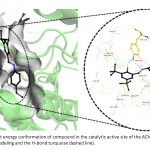 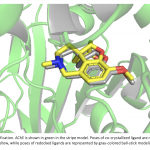 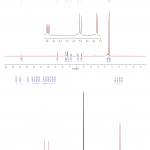 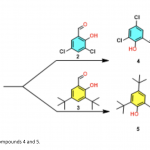 | 185 - 192 |
| Bioinspired Material-Integrated Sensors for Improving Nanoplasmonic Characteristics In this study, we demonstrated a nanoplasmonic-based sensor design, which was constructed with a bioinspired silk material and plasmonic materials (gold nanoparticles). We characterized this mutual integration at the molecular level by using Atomic Force Microscopy, Scanning Electron Microscopy, and also, the chemical composition was confirmed with Attenuated Total Reflectance-Fourier Transform Infrared Spectroscopy and X-Ray Photoelectron Spectroscopy analyses, along with contact angle measurements for evaluating hydrophilicity/hydrophobicity. Once a single layer of silk-gold nanoparticle mixture was accomplished, we serially applied an adlayer and plasmonic material to create more sensitive surfaces. Accordingly, we benchmarked the performance of this multi-layer sensor system, and observed ~6.8 times (or red-shifts from 7.93 nm to 12.90 nm) signal improvements compared to the one developed with a single layer. In sum, we here presented (i) a facile drop-casting method for developing a nanoplasmonic sensor design, (ii) the use of inexpensive off-the-shelf plastic as a substrate, (iii) easy-to-adapt strategy with standard spectrometer devices, and (iv) the need for minimum training for the proper use. 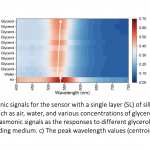 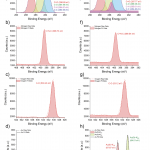 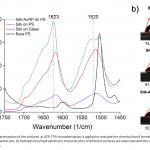 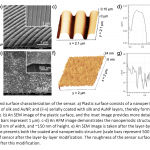 | 193 - 204 |
| Cefuroxime Imprinted p(HEMATrp) Cryogels: Preparation, Characterization and Antibacterial Role Both Gram-negative and positive bacterial strains are known as the most frequently responsible causative agents for wound infections. These infections can resulted in morbidity and mortality due to the severity. Antimicrobial agents have often been preferred to treat these infections. In this respect, Cefuroxime (CXM) belongs to the second-generation cephalosporins could be suggested against wound infections. In recent years, the designing of drug delivery systems has received interest and cryogels are promising tools for creating these systems. Their elastic nature, high macroporosity, absorption and releasing ability make these materials unique for drug delivery. Besides, the imprinting approach could be integrated into cryogelation and the resultant matrix can recognize target antimicrobial agent having high selectivity and sensitivity prepared along with an easy and cost-effective methodology. In the present study, CXM was imprinted onto Hydroxyethyl methacrylate (HEMA) based N-methacryloyl-l-tryptophan (MATrp) containing [p(HEMATrp)] cryogels. MATrp was used as the co-monomer for the preparation of CXM-p(HEMATrp) cryogels. Characterization experiments were performed to analyze the structure of prepared cryogels. Following drug loading and releasing assays, antimicrobial performances of CXM-p(HEMATrp) cryogels was investigated against Staphylococcus aureus, Enterococcus faecalis and Escherichia coli. In conclusion, CXM-p(HEMATrp) cryogels have been recommended as potential carriers for further biomedical applications. 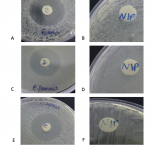 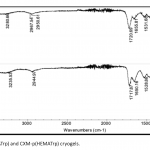 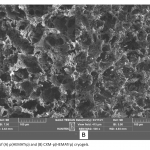 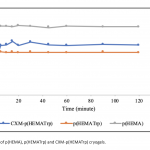 | 205 - 214 |